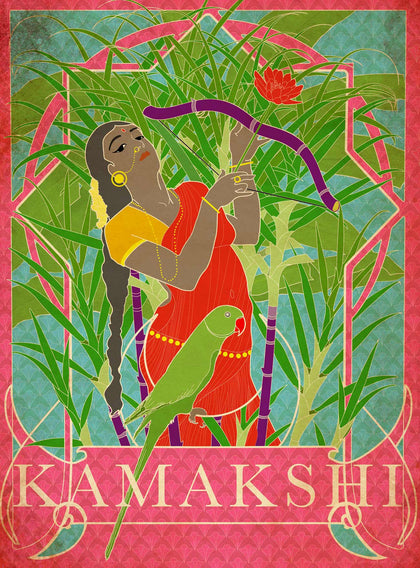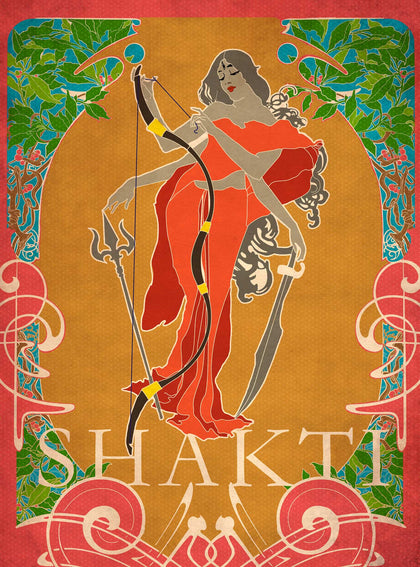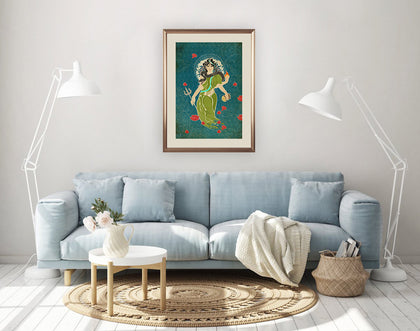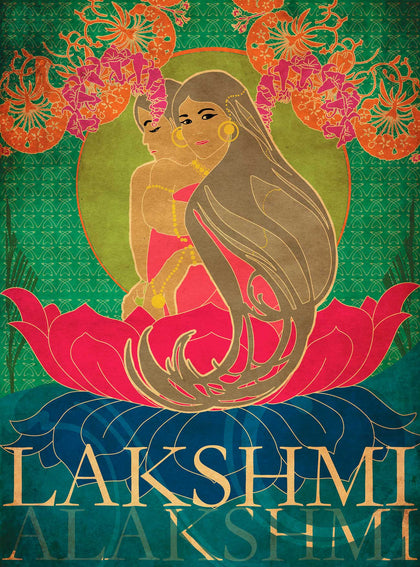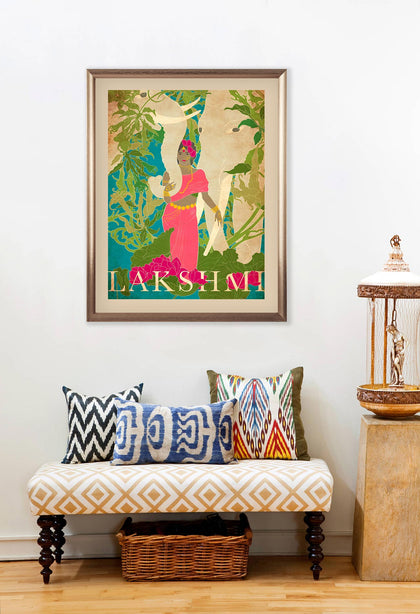Description
Rajeshwari is not just a virgin mother, but an independent one. A kumari matha.
Mythology is filled with attempts made by male devas and asuras who tried to capture her. Dying or suffering consequences, they learnt that nature will not be ruled by culture, and the attempt would lead to life lessons wrapped up in punishments. The mother goddess of all creation, she who holds the whip and the sugarcane. Punishment and Reward.
Arranging rivers along the valleys, she watched us take our first steps into her world, where everything had arrived before us. She regarded us from a distance, through the eyes of animals (all wild at the time), as she held in her womb, the three Gods who were to come. Brahma the god of creation, Vishnu the god of protection and Shiva the god of destruction - the son most protective of her.
In a world where volcanoes turn fire into stone, she taught us how to control it. Now, she is present in every temple – the Garbhagriha, the womb chamber, in which sits the idol. Sometimes, even giving birth to herself. In the forest and the sea, in every seed and flower, the goddess of creation weaves life into a complex fabric. She is (Prakriti), and the mother of all nature and culture.
An old goddess, from an old world, before life as we know it. She held the sun, and the moon, as he lured the ocean into an eternal tidal dance. There was no need to find reason or enlightenment, inspiration or joy. The bare fact of being, was enough in itself. She belongs to a world before us. A world before the Gods.
About the Series:
This artwork is part of the “Sister Misfortune” series, through which the artist, Smruthi Gargi Eswar, narrates lesser-known stories from Indian mythology, while reflecting on the narrative surrounding women in our culture. Various Indian goddesses (devis) are depicted with a refreshing artistic lens.
In India, there is a constant burden on women to be “Devi-like”. Through this series, the artist attempts a reverse deification of the goddesses, making them appear like real women, in a real world. The series is an exploration not just of duality, but of multiplicity. It compels us to question our attitudes - women towards themselves, men towards women. How does the idea of a goddess coexist within every woman? How do we, as a society, so casually dismiss, disrespect, disregard, and defile in our everyday existence, those who we have bedecked with gold and enshrined in a temple?
























































































 View Full Screen
View Full Screen































